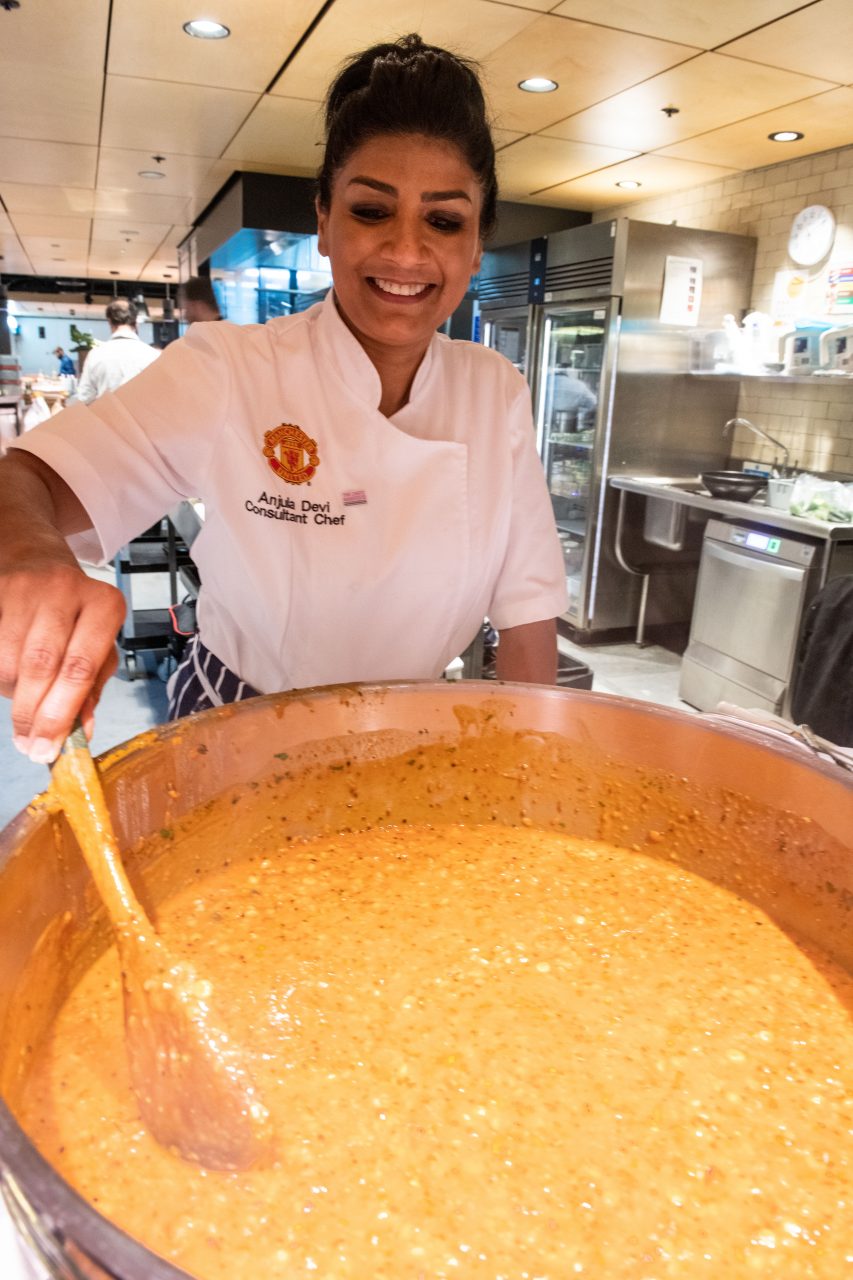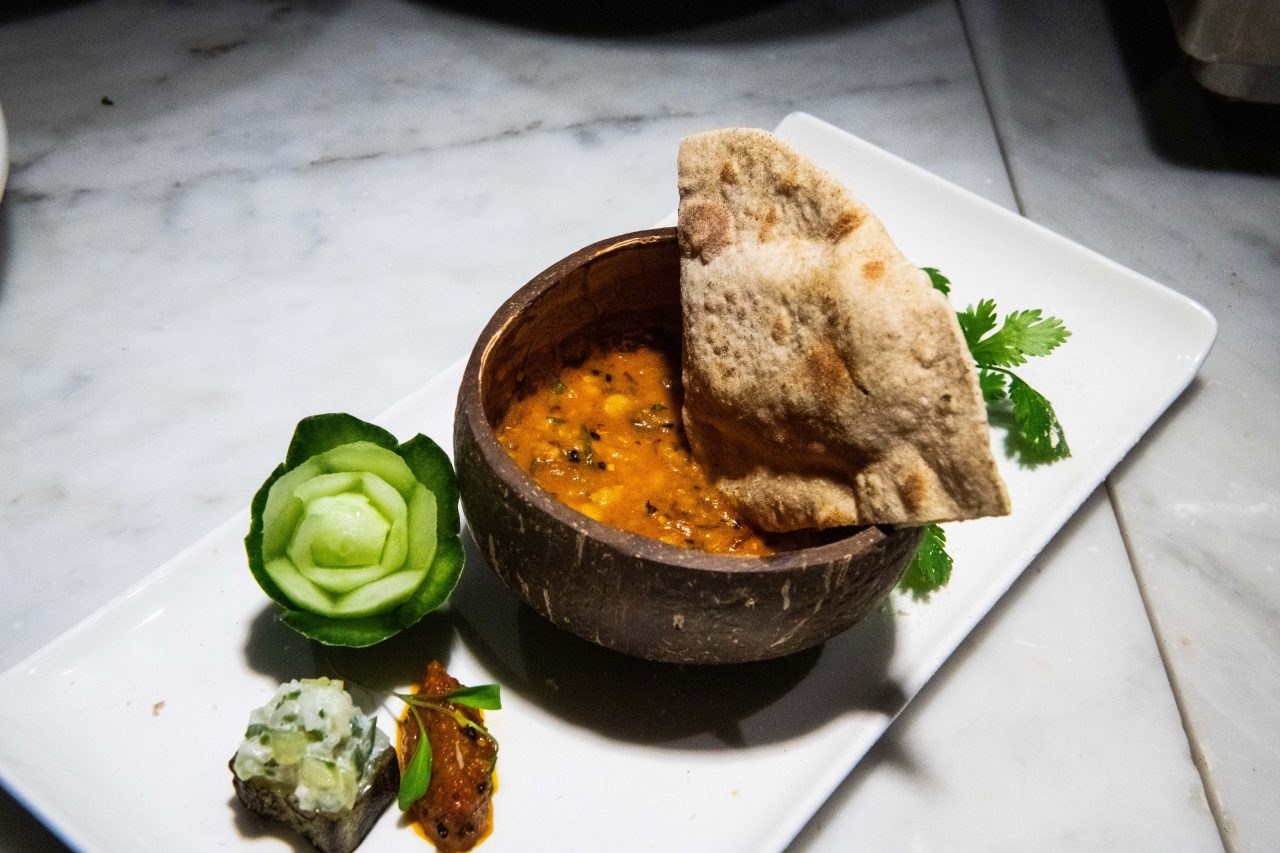A love for lentils: how World Pulses Day can change the way you eat
10.02.2020
Anjula Devi, Chef, Author and Indian Cuisine Specialist
My love for the humble and delicious lentil goes right back to my childhood when my father would take all the left-over lentils (nothing was ever wasted), put them into one pot and cook them in our back garden. In an era where one didn’t need to be invited, all the neighbours’ children would play in the back garden while my father would feed the family and anyone else who happened to pop in.
Growing up, our family diet was what is now known as a flexitarian diet – rich in vegetarian & vegan food and containing very little meat. We only ate meat on Saturdays, reflecting our tight family budget. Contained within this childhood diet were many different types of lentils and other pulses. We didn’t have a lot of money, but it felt like we were always rich in food.
On Sunday, we often ate a creamy bowl of urad black whole lentils, or black gram, cooked long and slow. This is a recipe you often find free of charge in temples known as Langar. Langar, roughly translates to ‘canteen’ or ‘kitchen‘ and is a practice in which volunteers in the gurdwaras cook enough North Indian food for everyone who wants to eat it. At your local gurdwara, regardless of faith, gender, ethnicity, or financial status, everyone is welcome to sit and eat a free meal between noon and midnight.

Put simply, lentils are deeply important to me, and they are critical to the diversity of Indian cuisine. They are more than an ingredient in a delicious dinner. Lentils are my memories of simpler times, of clean plates, and reminders of our responsibility to help others. There are few crops that are this important to the way I cook and eat, and with the right recipe, lentils can change the way you eat too.
Today is World Pulses Day, a fantastic opportunity to celebrate this important crop. When I think of lentils and the broader category of pulses – nutrition, sustainability and biodiversity immediately come to mind.
Originating in India, urad black whole lentils are in fact a bean, related to mung bean and cowpeas. They are a core element of Punjabi cuisine and have been cultivated for thousands of years in India and Pakistan.
It’s generally well-known that lentils offer a wide range of health and nutritional benefits from being protein rich to dense in nutrients such as potassium, calcium & vitamin K. Fully embracing the breadth of lentils available to us could become one component of a broader initiative to address the 800 million people who are chronically or acutely undernourished in our world today.
Today, as a consultant chef for Manchester United Football Club in north England, I cook with a large range of different lentils. Whilst red lentils are probably the mostly frequently used in the United Kingdom, there is a whole world of amazing lentils beyond that one variety. They bring a tremendous, rich diversity to Indian cuisine, a diversity I try to share through my kitchen and cooking school.
The full breadth of pulses is inspiring and impressive, and a range of different lentils, red kidney beans, black beans, chickpeas and dry peas are probably some of my favourite ingredients to cook with.
One of my favourite dishes is in fact Punjab Five-Jewelled Creamed Lentils, also known as Panch Ratan Dal. I have shared the recipe here for people to try at home; it’s an incredibly tasty dish! This past November, I made this for guests at the Food Forever Experience London , which aimed to showcase the power of lentils and the diversity of other ingredients for the future of food systems. I felt proud to play a small part in supporting and championing the importance of biodiversity when it comes to our food, by making and sharing a range of five lentils all combined in one simple, yet delicious dish.

The themes in the Food Forever Experience are ones that I also share regularly with my clients and in my greater work. Working with a great team of chefs, we have added a diverse range of healthy and wholesome Indian dishes to the hospitality menu at Old Trafford. The new additions include black lentils, tarka dal, chana dal, aubergines, okra, fine green beans with mangoes and tomatoes, ripe mango and red peppers as well as carrot, cabbage & fine green bean thoran.
Through our work, we’ve transformed the menu at Old Trafford. The humble lentil now plays a key role in putting nutritious and delicious meals on the table that celebrate the importance of diversity to our diets. The customer feedback has been very positive. For me, it’s all about encouraging people to try more from the treasure chest of incredible Indian dishes and the wide variety of crops that form the foundation of Indian cuisine.
I have always been very passionate about explaining how simple it can be to make great Indian food. It’s like anything else: refined and perfected through practice. If you learn how to make a great masala base for your Indian dishes, buy a masala dabba; learn what flavour each spice brings to your food and you’re halfway there!
It’s much easier now than it used to be to find a range of different lentils. I encourage all Indian food lovers to adventure, to explore and to enjoy the incredible diversity of Indian recipes that can be made with lentils, pulses and other plant-based ingredients. Many people in the UK have only been exposed to a small number of popularised Indian dishes, which appear on many Indian restaurant menus. But there are literally thousands of diverse, healthy and nutritious Indian dishes waiting for rediscovery. It is my hope that World Pulses Day can become an opportunity for more people to start this journey of discovery.
